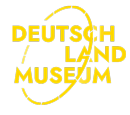
The High and late Middle Ages
1212
The High and late Middle Ages
Estates and towns: society in upheaval
The period between the 11th and 15th centuries known as the High Middle Ages was the heyday of knights and castles. During this time, the Holy Roman Empire of the German Nation dominated large parts of central Europe and northern Italy. Whilst the Middle Ages is often viewed as a dark age of superstition and rigid social hierarchy, it saw many important social and economic innovations.
Who rules – the King, princes or the Church?
Whilst the German King and Emperor carried authority in the Holy Roman Empire of the German Nation, no single dynasty was able to establish a permanent and hereditary claim to absolute power within its territories.
The Empire was made up of a multiplicity of rival duchies and bishoprics that competed for power and influence: this often required the German Emperor to make concessions to his nominal inferiors in order to maintain his position. The situation was compounded by difficult relations between Emperor and Pope, which often descended into conflict. Seeking to resolve this complex situation, the provisions of the Golden Bull (1356) accorded a defined group of electors the right to elect the King.

Powerful electors: they alone had the right to elect the German king Illustration from the Balduineum I, fol. 3, 1307–1354 (source: Landeshauptarchiv Koblenz)
Medieval society
High medieval society was divided into a number of estates, each with defined rights and privileges. At the apex of society sat the King, who was followed by the secular (dukes and counts) and ecclesiastical (Archbishops and even some abbots) princes. The middling orders were made up by the knights, who ranked above the common people. Medieval society was organized in accordance with the feudal principle, in which a person of higher rank granted land (a “fief”) and protection to a person of lower rank in return for his loyalty and support. At the lowest end of society, the peasants were often subject to various forms of bondage and were considered part of the landed estate.

Knights demonstrated their fighting skills at tournaments and were able to increase their standing in aristocratic society Illustration from the Codex Manesse, fol. 17r, c. 1305–1340 (source: Heidelberg University Library)
The High Middle Ages was the heyday of chivalry. In addition to their duty to perform military service, knights also competed against each other in tournaments, which developed into the largest, most spectacular entertainments of their day. Knightly culture also included the Minnesang, a ritualized form of song. The development of this art form made an important contribution to the development of a standardized German literary language.
Society underwent considerable change during the High and Late Middle Ages. The development of towns, each with their own rights and often part of powerful city alliances such as the Hanseatic League, produced considerable social change. Urban citizens, merchants and craftsmen gained in wealth and influence and began to emancipate themselves from the ruling nobility
Share article
1212
Frederick II was elected German king in 1212. In return for being placed on the throne, he had to grant certain rights to his noble supporters.
Epochen im Museum

About the Deutschlandmuseum
An immersive and innovative experience museum about 2000 years of German history
The forest of the Varus Battle
Knowledge is just one click away
Embark on a journey through 2,000 years of German history. One country, 12 epochs. You’re invited to experience the Epoch Weeks at the Deutschlandmuseum. Every week we showcase an epoch that is also on display in the Deutschlandmuseum.
FAQ
The German High Middle Ages lasted from the middle of the 11th century to the middle of the 13th century. The period from the 13th to the 15th century is known as the Late Middle Ages.
Politically, the High and Late Middle Ages were characterized by conflict between King and Pope and the growing influence of the German princes. This was the heyday of chivalry; the period also saw the growing influence of new towns.
Knights were commissioned with the maintenance of order and were expected to render military service. In return, they received taxes and labour from unfree peasants on their land. Knightly tournaments were the major sporting events of their time.


